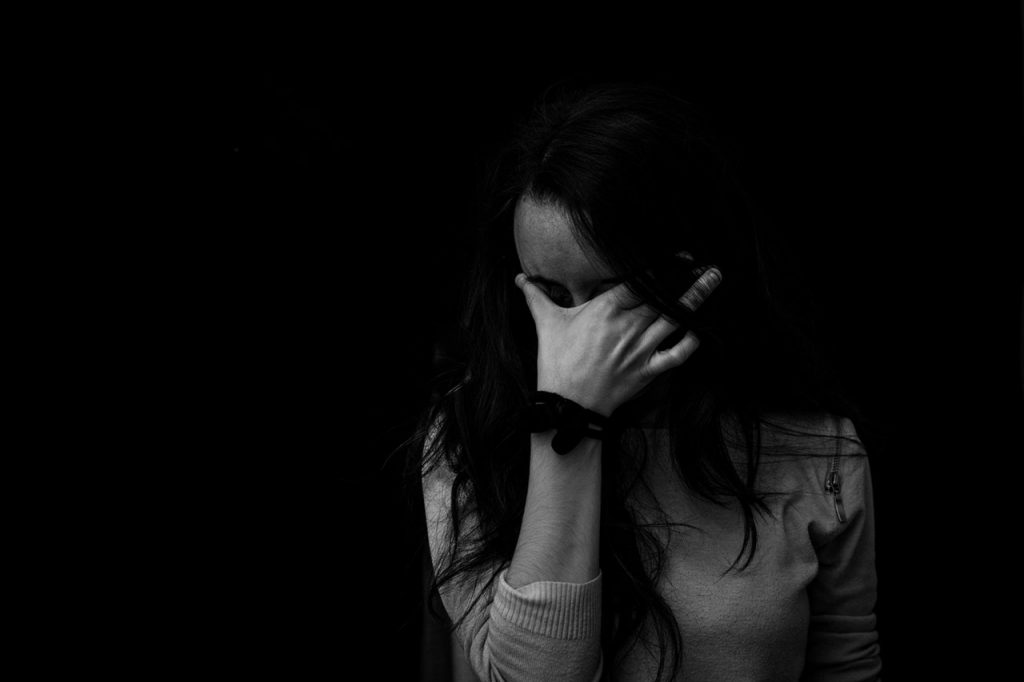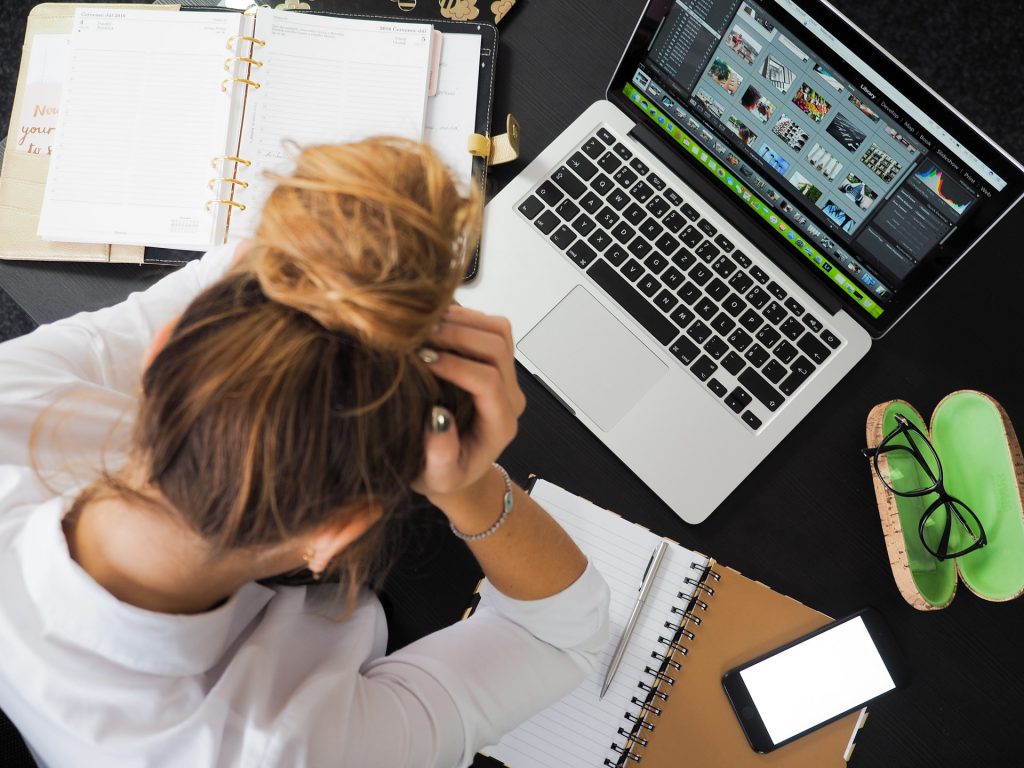Anxiety and stress can be an overwhelming force. Like trying to bail water out of a sinking boat, dealing with anxiety often feels hopeless. No matter how much you try to control your feelings, the paralyzing emotions never seem to end.

Deceptions of Chinese breathing exercises found in a burial site from 200 AD.
For centuries, mindfulness gurus have been promoting the use of breathing and meditation to quell anxiety. It’s a practice which has always faced some skepticism within the medical community. However, in the last decade, the science around treating anxiety with controlled breathing exercises has come to light. It seems that meditation and mindfulness experts have been right all along; the human body is essentially designed to use oxygen for moderating anxiety.
Why We Breathe
Oxygen is one of the most important fuels for our bodies. On average, we take about ten breaths per minute. Each day, we are bombarded with all the reasons we need to eat and drink properly. Yet, we rarely think about the amount of oxygen we take in and how it affects our bodies— specifically our minds. It helps us think, digest and even move the smallest of muscles.
In the very simple terms, we breathe to get oxygen to our cells. Our cells then use this oxygen to break down sugar into carbon dioxide (which we breathe out) and water. This entire process is designed to help provide energy to vital organs such as the brain and heart. This system, subconsciously controlled by the brain is keeping a watchful eye on the levels of oxygen and carbon dioxide in your body.
The build-up of carbon dioxide sends signals to the brain to bring in more oxygen, using more energy to release carbon dioxide. Remember though, that this energy-intensive process causes the body to produce more carbon dioxide, creating a vicious cycle. Understanding this cycle helps recognize why anxiety and breathing go hand in hand.
How Breathing Affects Your Mind
The air we take in also plays a huge psychological role. Humans breathe when they sing, laugh and cry—we breathe at every moment of our lives. And more and more research is showing that breathing highly impacts our moods and our memory.
Studies conducted by researchers at Northwestern University in Illinois showed that brain activity fluctuates in sync with breathing. Breathing also impacts the amygdala, which controls how humans handle emotions. “If you are in a panicked state, your breathing rhythm becomes faster. As a result, you’ll spend proportionally more time inhaling than when in a calm state,” said Christina Zelano, assistant professor of neurology at Northwestern University Feinberg School of Medicine, lead author of the report.

Our fight or flight response can be triggered by just our thoughts
When your brain detects an external threat, the amygdala takes over and determines the appropriate reaction (this is often called the “fight or flight” response.) During this heightened state, adrenaline races through our body causing our heart rate to speed up, blood pressure rises and our breathing rate doubles, to nearly 20 breathes per minute. Our bodies do all these things for a reason, to prepare ourselves to react to the threat of danger.
But what if there is no ferocious animal or terrifying criminal standing in front of you? You simply have the feeling that something is wrong. Well, this is likely your anxiety taking over (which, trust us, is also important for your survival) Your body reacts like a physical threat is standing in front of you, except these current threats are simply ideas floating in your mind. This doesn’t mean they are imaginary or made up; it simply means that without strong coping techniques, your anxiety and stress can end up being a barrier to happiness and productivity.
How Anxiety and Breathing Work Together
One in five people struggle with anxiety and the numbers are on the rise. Odds are you have felt it before. The symptoms could include:
- Tightening and/or aching muscles
- Rapid breathing
- Lack of saliva and dry mouth
- Nausea or indigestion
- Chest pains
- Vertigo or dizziness
- Sweating
- Even possibly blurred vision

An anxiety attack can sometimes last 30 minutes
If you have had any of these symptoms, it is a good idea to speak with your doctor, as they can be attributed to other causes. However, if they appear to be triggered by and event or thought, then anxiety is often the culprit. This is all thanks to our internal friend the amygdala which leaps into action when a threat is detected. The key difference is these threats are often in the mind or perceived; especially for people affected by an anxiety disorder.
The trigger can be the slightest of things; a news headline, challenges at work or the thought of having a “heart-to-heart” with a loved one. Anxiety isn’t “bad,” it’s still a part of our fight or flight instincts. Yet, anxiety and stress can easily overwhelm and overpower the mind without understanding how to manage it.
Earlier we said oxygen creates the energy which helps expel carbon dioxide from the body. Yet, this very process produces even MORE carbon dioxide, which needs to be expelled. So, if anxiety makes you gasp for air, your body will always be in this accelerated state of rapid breathing.
As we now know, proper breathing can help control our emotions, intrusive thoughts and body during instances of high stress. Specifically, when we breathe through our nose, it helps the brain make better decisions when emotions are tied up in the situation. Maybe some of these thoughts have spiked your anxiety:
- What if I’m late for this appointment?
- Have I chosen the wrong career?
- I don’t think I will finish this report on time.
- I think my partner is cheating on me.
- What if I have cancer?
- I will never have enough money to retire.

A simple email or text can spike anxiety; causing us to lose focus for hours
Even if these things have not happened, these thoughts are still powerful enough to send your adrenaline skyrocketing. With proper breathing and mindfulness techniques, you can control your body’s reaction before it controls you.
A Beginner’s Guide to Proper Breathing
Like learning a sport or musical instrument, proper breathing for anxiety takes the right playbook and some practice. We understand that getting started can feel overwhelming (it may even cause some anxiety!) So, here is a beginner’s guide to breathing exercises for anxiety by guru Linda Hall, broken down into some very easy steps:
- Sit up with good posture while making sure you are still comfortable.
- Close your eyes or soften your gaze on an object, this can be anything, even the floor or wall.
- Try to eliminate visual distractions.
- Breathe in deeply and slowly through your nose.
- Exhale slowly through your mouth and envision that you are letting the weight of your body escape.
- Repeat these steps finding and focusing on the natural rhythm of your breath while gradually slowing it.

Focus on feeling comfortable rather than perfection of technique
Whether in bed after waking or at your desk, you can practice this anywhere. Beginners sometimes struggle to keep focused. It’s totally normal if your thoughts drift to other things, just catch yourself and start again. Try to concentrate on the sound of your breath, or how your chest rises and falls, or even the sensation of air flowing through your nostrils.
And that’s it; the very first steps of structured breathing exercises for anxiety and stress. At this stage, you don’t need to have a meditation marathon –remember, it takes practice. Even just finishing one minute at this stage is a win. As one minute gradually becomes ten minutes, here are some more advanced breathing exercises for anxiety to put in the toolbox.
More Breathing Exercises for Stress and Anxiety
Breath Meditation Counting
Ajahn Achalo has been studying meditation with monks from around the world for nearly two decades. A contributor to Mindbliss, his process of Breath Meditation Counting has been practiced by monks for centuries to help build mental power.
Start with the steps from our beginner’s breathing exercise but this time, count “ONE” during your exhale. Inhale again and count “TWO” during the next exhale. Repeat this process until you reach the number TEN.
If you lose track of a number, don’t worry, simply start over. As you gain experience with this exercise, try counting backward from TEN or extend the length of counting to 20 or even 50. You should find this exercise helps you clear distracting thoughts and boosts concentration power.
Progressive Relaxation
This breathing exercise is designed to eliminate tension throughout the entire body—from your feet to your forehead. After you get accustomed to simple breathing exercises, casually hold your breath while simultaneously focusing on a tense area of the body for a few seconds.
You can start with the forehead, arms, calves or wherever you feel the most tension. Should you feel any pain or discomfort, move on to another part of the body. Dr. Gale Michew, a licensed psychologist, has a wonderful progressive relaxation session available in the Mindbliss app.
Box Breathing
Sometimes called square breathing or navy seal breathing (it is practiced by navy seals to help control their stress levels,) box breathing is a very straight forward breathing exercise for anxiety and stress relief. In a way, it’s a very simple version of meditation and can be a good starting point for beginners.
Again, find a comfortable place to sit upright and keep your body relaxed. A quiet and non-distracting environment is ideal but this technique can be practiced anywhere at any time:
- Exhale slowly, while counting to four;
- Now count to four again, once your lungs have been depleted;
- Inhale slowly and deeply through your nose while counting to four;
- With your lungs full, count to four again; then
- Repeat the process from step one.
If you get lightheaded or dizzy (which can happen to newbies,) just resume breathing normally until the feeling passes and then resume box breathing.
Heart Healing Breath
This technique was developed by a popular contributor to Mindbliss, Jhenneviev Heartt. Her teachings blend various parts of yoga, natural medicine and transformational breathwork. The Heart Healing Breathe exercise is designed to help relieve stress and tension in the chest, upper back and throat.
You will want to find some privacy for this exercise. As usual, find a comfortable place to sit but this time, you will want a chair which can recline and support your neck. Start with your beginner’s breathing routine and focus on filling your upper body with air, just above your belly. Let your eyes, neck and head soften as the breaths become slower.
At this point, introduce a different breathing technique called “Sipping”. Imagine you are drinking out of an imaginary straw (or whistling in reverse); inhale this way, maintaining the continued goal of filling your lungs with air. Your chest should start to feel light but energized.
Finally, we will now introduce a slight sound during the exhale. After each sipping breath, softly say “ahhhhh….” as you exhale. Picture a doctor examining your throat but keep your tongue in! This whole process will help the head, jaw and neck relax. Allow your body to sink deeper into your reclined seat as your breathes and chants slowly release in the areas we carry it most.
(Even More) Breathing Exercises For Anxiety
This is just the beginning of your journey. As you get better, you may be curious to explore other types of breathing and meditation routines. You can find these routines in the Mindbliss app, which has been specially designed to help guide and accelerate your evolution in mindfulness. It runs on an intelligent algorithm dedicated to curating the ultimate meditation experiences to fit your needs.

This will be a transformative journey – we know you can do it

